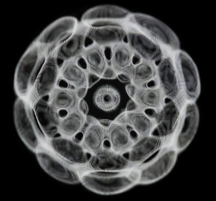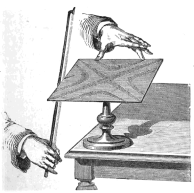Following completion of my PhD, I am currently a member of staff at Edinburgh Napier University. This site is a work-in-progress and provides a brief overview of my research into real-time multi-modal applications.
3D Cymatics: An Interactive Audio-Visual Therapeutic Tool for People on the Autism Spectrum
Can an audio-visual application improve the therapeutic experiences of people with sensory impairments? Over the three years of my PhD, I am interested in designing, building, testing and evaluating a real-time audio-visual application for use in music therapy as an augmentative tool. The tool allows clients, in particular people on the autism spectrum, taking part in a music therapy, or creative arts session, to get visual feedback on what they are playing. The aim is to encourage communication, social interaction and self-esteem within clients.
Cymatics
Simply put, if you could ‘see’ music, what would it look like? Cymatics are physical impressions of sound, created as a result of diffraction and refraction of sound waves created within the visualising medium (Jenny, 1968). Cymatics until now have been viewed as quasi-3D patterns in water or on the surface of a Chladni plate (see below). 2D and 3D Cymatic software simulations exist, but are based on Chladni’s 18th century principles. The visualisations represent a cross section of a sonic bubble created by the resonance of a particular size of plate, not the shape of sound. Sound propagates in a spherical manner from its source contrary to typical representations of sound waves.


Following discussion with a number of music therapists, data was gathered as a basis for initial prototype design requirements. The requirements have been used as a basis for mapping audio to visual attributes within the prototype. For example: amplitude to scale; pitch to Cymatic shape and colour; timbre to detail/surface quality of Cymatic shape.
The CymaSense prototype is a real-time interactive interface that visualises 3D shapes, inspired by Cymatics. See the ‘About CymaSense’ page for more information and video clips.
See the publications page for information on recently published papers.